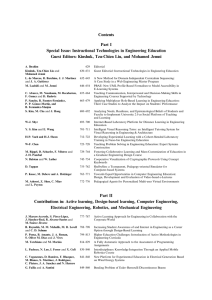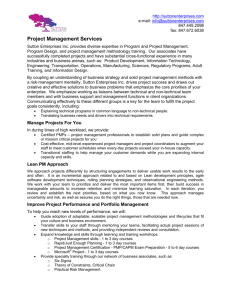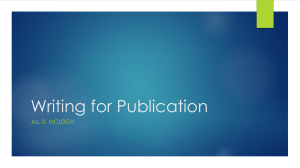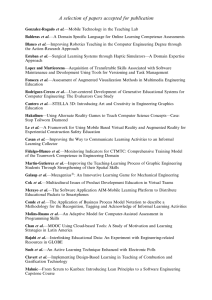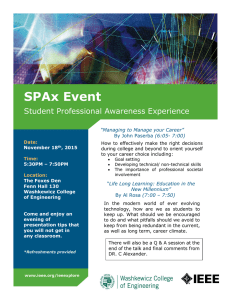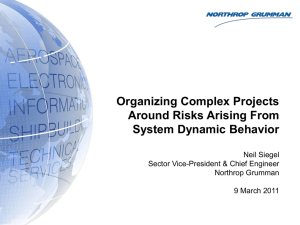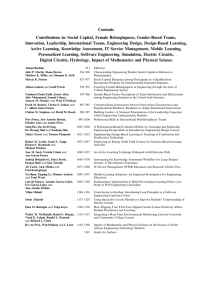Editorial
advertisement
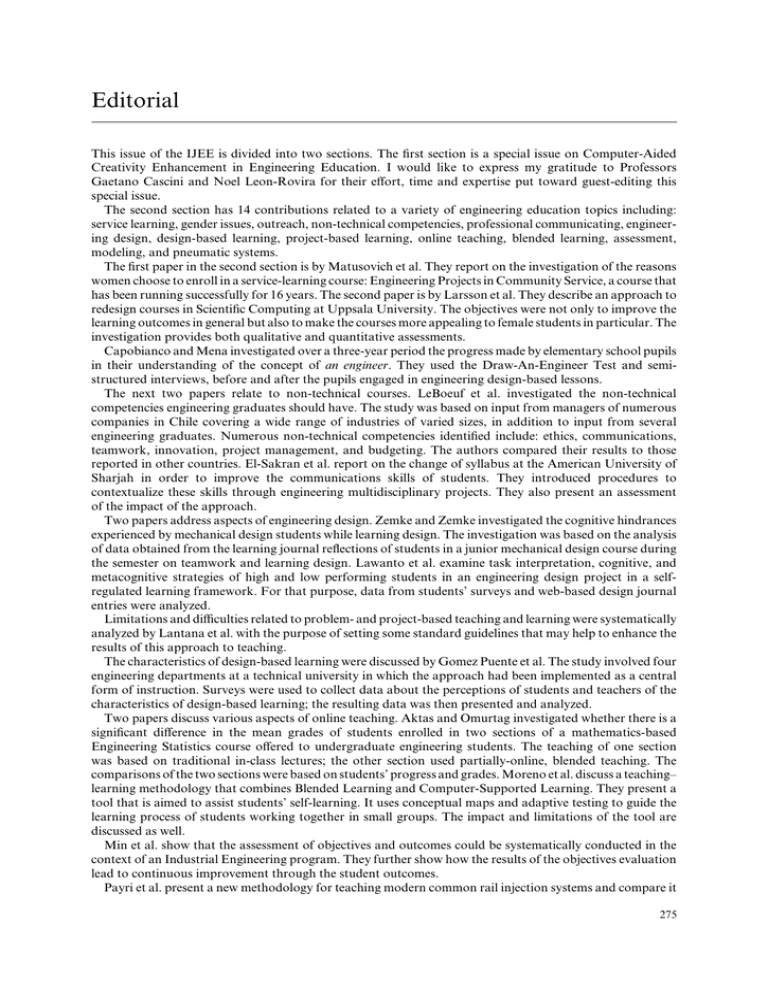
Editorial This issue of the IJEE is divided into two sections. The first section is a special issue on Computer-Aided Creativity Enhancement in Engineering Education. I would like to express my gratitude to Professors Gaetano Cascini and Noel Leon-Rovira for their effort, time and expertise put toward guest-editing this special issue. The second section has 14 contributions related to a variety of engineering education topics including: service learning, gender issues, outreach, non-technical competencies, professional communicating, engineering design, design-based learning, project-based learning, online teaching, blended learning, assessment, modeling, and pneumatic systems. The first paper in the second section is by Matusovich et al. They report on the investigation of the reasons women choose to enroll in a service-learning course: Engineering Projects in Community Service, a course that has been running successfully for 16 years. The second paper is by Larsson et al. They describe an approach to redesign courses in Scientific Computing at Uppsala University. The objectives were not only to improve the learning outcomes in general but also to make the courses more appealing to female students in particular. The investigation provides both qualitative and quantitative assessments. Capobianco and Mena investigated over a three-year period the progress made by elementary school pupils in their understanding of the concept of an engineer. They used the Draw-An-Engineer Test and semistructured interviews, before and after the pupils engaged in engineering design-based lessons. The next two papers relate to non-technical courses. LeBoeuf et al. investigated the non-technical competencies engineering graduates should have. The study was based on input from managers of numerous companies in Chile covering a wide range of industries of varied sizes, in addition to input from several engineering graduates. Numerous non-technical competencies identified include: ethics, communications, teamwork, innovation, project management, and budgeting. The authors compared their results to those reported in other countries. El-Sakran et al. report on the change of syllabus at the American University of Sharjah in order to improve the communications skills of students. They introduced procedures to contextualize these skills through engineering multidisciplinary projects. They also present an assessment of the impact of the approach. Two papers address aspects of engineering design. Zemke and Zemke investigated the cognitive hindrances experienced by mechanical design students while learning design. The investigation was based on the analysis of data obtained from the learning journal reflections of students in a junior mechanical design course during the semester on teamwork and learning design. Lawanto et al. examine task interpretation, cognitive, and metacognitive strategies of high and low performing students in an engineering design project in a selfregulated learning framework. For that purpose, data from students’ surveys and web-based design journal entries were analyzed. Limitations and difficulties related to problem- and project-based teaching and learning were systematically analyzed by Lantana et al. with the purpose of setting some standard guidelines that may help to enhance the results of this approach to teaching. The characteristics of design-based learning were discussed by Gomez Puente et al. The study involved four engineering departments at a technical university in which the approach had been implemented as a central form of instruction. Surveys were used to collect data about the perceptions of students and teachers of the characteristics of design-based learning; the resulting data was then presented and analyzed. Two papers discuss various aspects of online teaching. Aktas and Omurtag investigated whether there is a significant difference in the mean grades of students enrolled in two sections of a mathematics-based Engineering Statistics course offered to undergraduate engineering students. The teaching of one section was based on traditional in-class lectures; the other section used partially-online, blended teaching. The comparisons of the two sections were based on students’ progress and grades. Moreno et al. discuss a teaching– learning methodology that combines Blended Learning and Computer-Supported Learning. They present a tool that is aimed to assist students’ self-learning. It uses conceptual maps and adaptive testing to guide the learning process of students working together in small groups. The impact and limitations of the tool are discussed as well. Min et al. show that the assessment of objectives and outcomes could be systematically conducted in the context of an Industrial Engineering program. They further show how the results of the objectives evaluation lead to continuous improvement through the student outcomes. Payri et al. present a new methodology for teaching modern common rail injection systems and compare it 275 276 Editorial with the previous methodology. The new methodology is based on the use of a one-dimensional injector model that had previously been validated. They describe the work that students do with the model and present evidence about the impact this has on learning. The final paper of the regular issue by Carneiro et al. presents an introductory graduate course on pneumatics and hydraulics with laboratory experiments that use off-the-shelf industrial components and circuits. They present both a pedagogical assessment and a students’ evaluation of the new approach presented. I wish to thank all the authors for their important contributions and I hope the readers find this issue of the IJEE interesting, useful and thought provoking. Ahmad Ibrahim
